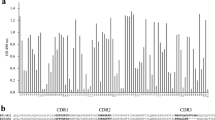Summary.
Cucumber mosaic virus (CMV) is a three component isodiametric plant virus which is common worldwide and has an extremely wide host range. A pseudorecombinant was made, derived from the RNA3 component of the CMV-S strain, carrying the coat protein (CP) gene, and the RNA1,2 components of the CMV-D strain. This system developed mild mosaic and vein clearing in Xanthi tobacco three weeks after inoculation. The CP gene was then engineered in three different positions, to encode a Hepatitis C virus (HCV) epitope. The selected peptide was the so-called R9 mimotope, a synthetic surrogate derived from a consensus profile of many hypervariable region 1 (HVR1) sequences of the putative HCV envelope protein E2. Serum samples from 60 patients with chronic hepatitis C displayed a significant immunoreactivity to crude plant extracts infected with the chimeric CMV. These results suggest that further investigation should be made into a possible vaccine function for the CMV-HCV mimotope system.
Similar content being viewed by others
Author information
Authors and Affiliations
Rights and permissions
About this article
Cite this article
Natilla, A., Piazzolla, G., Nuzzaci, M. et al. Cucumber mosaic virus as carrier of a hepatitis C virus-derived epitope. Arch Virol 149, 137–154 (2003). https://doi.org/10.1007/s00705-003-0190-x
Received:
Revised:
Accepted:
Published:
Issue Date:
DOI: https://doi.org/10.1007/s00705-003-0190-x




